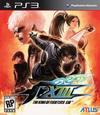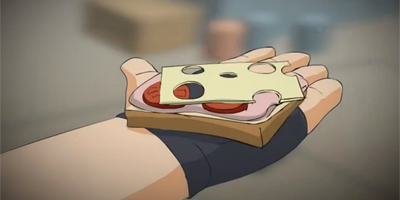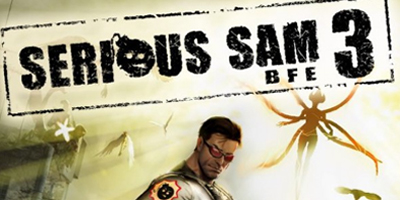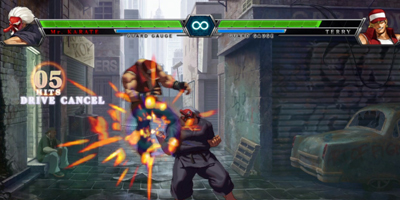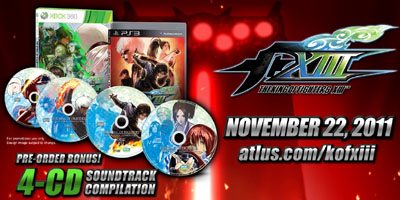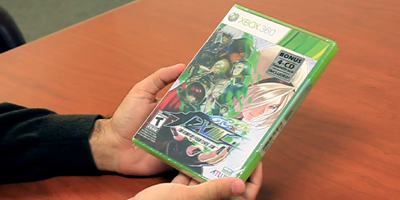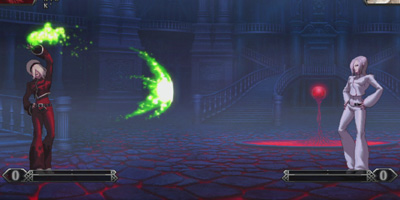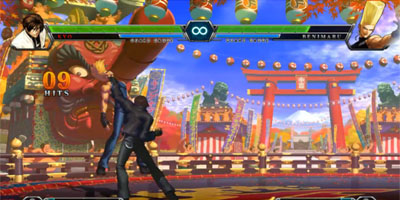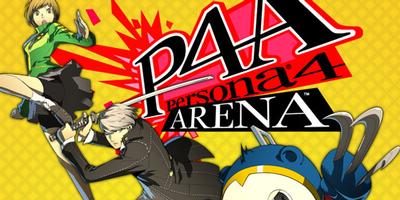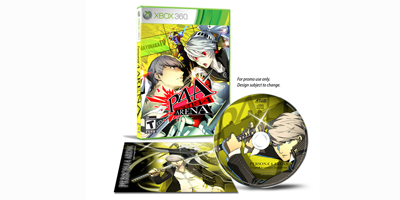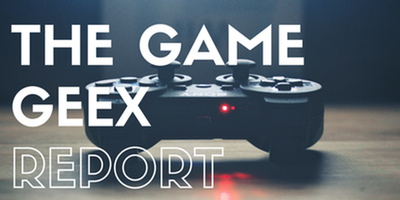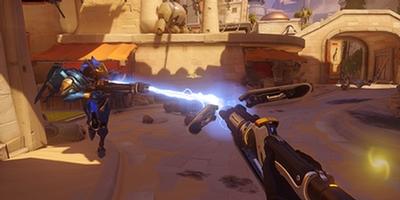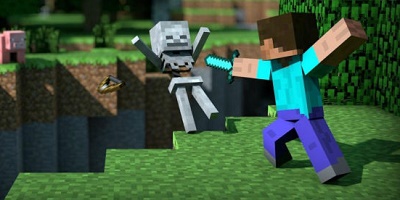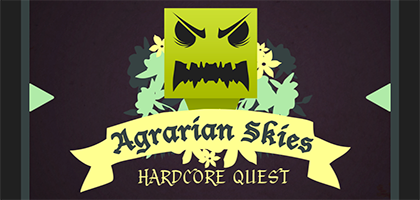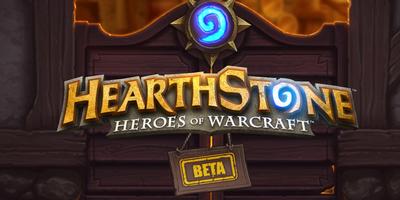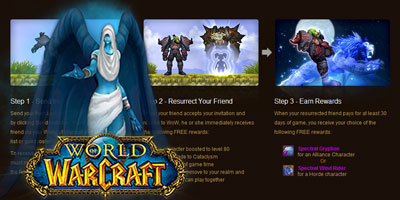
- by Michael "Sir Loin of Beef" Revis
- Posted on November 28, 2011 @ 4:00 PST
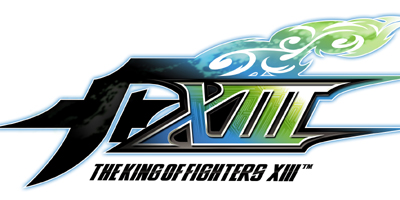
King of Fighters XIII
Genre: Fighting

The ESRB has rated this product:
Teen
Teen
11/22/2011 ( PlayStation 3,X-Box 360 )
Developer: SNK Playmore
Publisher: Atlus
Genre: Fighting
ESRB Rating: T
Release Date: November 22 2011
Platforms: PS3, Xbox 360
Fans have waited ever so patiently for the arrival of a console version of the arcade hit King of Fighters XIII. For almost two years they waited, with barely a word. People began to wonder if SNKP would be able to even do a console version because of how bad the previous game bombed. Finally, Atlus stepped in as a savior for a legendary franchise, and giving hope to those who have only had a chance to play it at the remaining arcades scattered across the country.
And now, the wait is finally over.
The Return of the King (of Fighters)
One of the few things that KoFXII was praised for was how crisp and fluid the graphics were. SNKP was able to fully bring those same graphics back in XIII with gusto, providing fluid 2D animation that makes other games look like flash cartoons in comparison, all without slowing down the game speed an inch. Just simply watching the characters run around the stage is a treat for the eyes. It’s a marvel that few other companies can lay claim to.
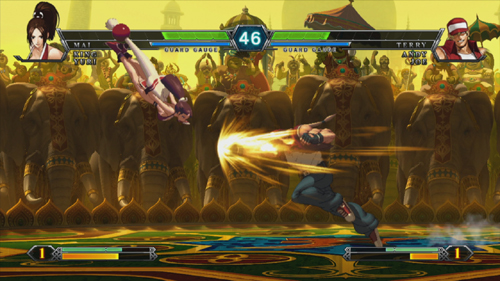
Each character you can use moves so fluidly, and attack effects pop out of the screen in a colorful display. Neomax moves especially have very flashy effects tied to them, which make you feel the full force of that particular attack. The backgrounds that you fight in also share this same level of detail, with brilliantly rendered arenas that are full of life, yet are not distracting from the action going on between combatants. For a smalltime company that has faced bankruptcy several times in its life, being able to pull this level of animation in a video game is especially worthy of applause.
The music is also well crafted, utilizing numerous different influences from across the globe. Whether it’s the mixture of Hispanic and classic eastern musical styles of Team Art of Fighting’s theme, or the more traditional rock tones for Team K’ and Yagami, the music finds a way to fit with each battle you take part in, and lends itself to repeated listenings.
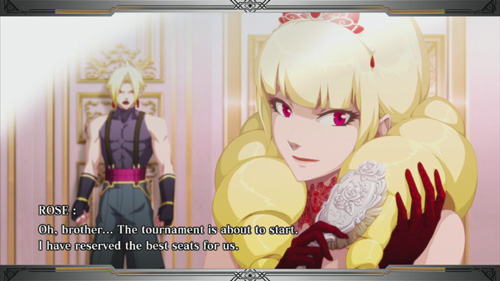
Hey! Come on, come on!
For fighting games, gameplay means a lot. While its predecessor brought some interesting concepts to the table with the Critical Counter system, it largely just resulted in people fishing for counter hits as soon as they were able to, slowing down the flow of the match. This time around, we have the HD system, which can expand a character’s combo potential to allow for things that couldn’t normally be possible.
For example, a simple Terry combo can involve a standing HP to Burn Knuckle. However, with enough meter in your HD gauge, you can do a Drive Cancel from the Burn Knuckle, and tag on a properly timed Crack Shoot at the end for extra damage. The timing can be a bit strict, but the rewards are usually worth the effort. Because of this, even the most basic combos can turn into incredibly damaging attacks for those with enough diligence to learn them. Grapplers can especially take advantage of this system, with characters like Clark and Daimon being able to Drive Cancel into their command grabs for heavy damage.
The HD gauge also holds a wild card weapon that any character can take advantage of, called HD mode. When activated, this mode allows a character to perform devastating combos with a near unlimited amount of drive cancels. However, this mode is far from an “I Win” button, and isn’t as easy to use as the comeback mechanics that have been making their way in other games as of late. Activating HD mode doesn’t give any special bonuses outside of the drive gauge buff, so trying to start it outside of a combo will generally cause you to get your sh*t slapped. HD combos are also some of the most difficult ones to pull off in the game, so don’t expect to be able to perform one without spending some time in training mode. The rewards for completing these very flashy and very damaging combos, however, are worth the effort required in doing them.
Another new addition to the game is the EX system. Similar to games like Street Fighter 3 and 4 and the new Mortal Kombat, you can expend a stock of your super meter to enhance one of your special moves. While some EX moves can simply do more damage, others take on new properties, and allow for additional combo setups. Using Terry as an example again, his EX Power Wave creates a slow moving projectile that hits multiple times, and can allow for cross-up situations when properly applied. Duo Lon’s EX shadow kick also launches opponents to him for juggles, and Benimaru’s EX thunder fist attack stuns the opponent, allowing for extended combos. Combine these with HD mode shenanigans, and you can pull off some pretty insane stunts.
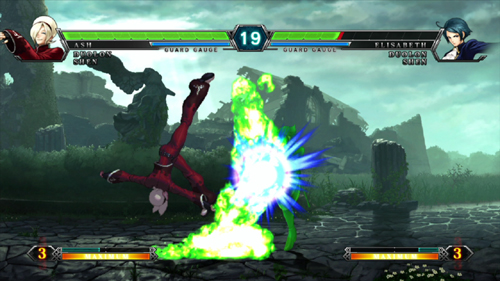
The Online Warrior
KoFXII had a lot of problems with it, of particular being the complete lack of single player content. This has largely been remedied with the inclusion of a larger roster of 30+ characters, an enhanced arcade mode (which you’ll need to play through to unlock console exclusive characters Billy Kane and Saiki), as well as new game modes in general.
Of particular interest is the addition of the Story mode. This mode covers some of the events that don’t show up in the arcade mode, but, for the most part, the outcome is largely the same if you’ve played through it at the arcades. You do get a closer look at the character relationships, however, this is largely limited to pre-battle banter between teams.
Despite the fact that it gives you a bit more detail on the events that transpire, it could have been tackled a bit better. For example, you can’t really control the speed of the text, which results in you being stuck reading the dialogue at the game’s pace rather than your own, which can be faster than you want to read (you can skip cinematics, though). Combine this with some awkward translation quirks, being forced back to the chapter menu if you happen to lose a fight segment rather than being given the option to retry, and the lack of voice acting of any kind during the cinematics, and it doesn’t quite leave the impression that it should be able to.
Mission mode has several different sub-modes for players to tackle. Time Trial requires you to go through a series of fights with a single character for the fastest time, while Survival pits you against a constant stream of foes to see how long you can last. Trial mode is pretty standard to similar concepts, tasking the player to perform various combos. These combos start off easy, but get more challenging as you progress. Some of them you can apply to a real match, while others might leave you scratching your head at the practicality of them.
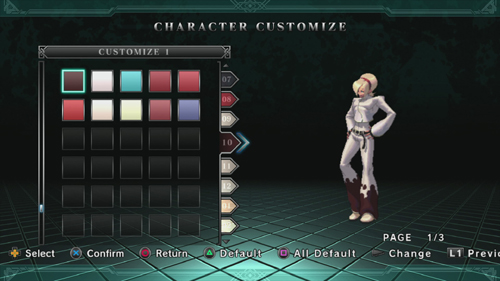
Of course, online mode is a lot of people’s primary concern, especially since one of the most common complaints with the previous iteration was the horrendous netcode. This has largely been fixed up to be more viable, but it’s still not a perfect system, and the usual rules of engagement for online encounters should still be applied. If you’re getting three bars and up, you’re likely in a good spot, but two or less, and you’ll probably find it difficult to do the most basic actions.
It’s also worth noting that there is no spectator mode in player lobbies, which kind of hampers the experience a bit. On the other hand, you do have the option to mess around in Practice while waiting, so you can at least warm up beforehand. Of course, even with the lack of spectator mode, this is still an improvement over what players had to contend with previously.
There is also the Customization mode, which allows you to create custom color sets for each of the playable characters in the game. Doing this helps make your team choice stand out amongst others, since these custom colors can be used in online matches as well. The color options you have are many, and the various portions of the character you can edit are surprising. Even eye and fingernail colors can be changed around, and even more color palettes can be unlocked during the course of your playtime, which gives you increased freedom to create your ideal character outfit. The possibilities are nearly endless. Want to do give Ryo a Dan Hibiki outfit, or turn Iori into a zombie? Just find the appropriate colors and you’re good to go.
Select The Order
The creation of KoFXIII really is a story of rebirth and redemption. It’s a love letter to the fans of the franchise, and for fighting games in general. There aren’t any half-assed gameplay gimmicks, no annoying comeback mechanics, and various little intricacies that harkens back to the glory days of fighting games. Hell, even the bosses have the traditional SNK difficulty bullsh*t attached to them (which may be a good thing or a bad thing).
While you may not get the most out the story, you are getting one of the deepest fighting systems to have come out this year, and one of the best looking 2D fighters to have come out in a long time.
tl;dr - Too long; Didn't read
After the tremendous blunder that was KoFXII, SNKP and Atlus have worked to redeem the franchise’s honor by providing a game with more content, an engaging and rewarding fighting system, and improved online. Though there are a couple basic things missing from the package, this game provides ample material for both newcomers to the franchise, and fans that have stuck with it over the years. If you're a true fighting game fan, then you will definitely need to check this out.
Aesthetics: 5.0
GamePlay: 4.5
Story: 3.5
Quality: 4.5
Overall Score: 4.5
0 Comments for this post.
You must be signed in to post a comment.

